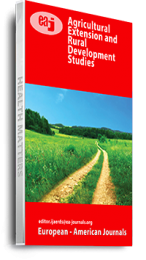This study conducted a gender-based description analysis of beef cattle production and its determinants in Eswatini. Data were collected from 397 farmers through personal interviews and analyzed using descriptive and inferential statistics and multiple regression. The gender comparative assessment revealed a low average herd size for females (p<0.01). Males indicated superiority in numbers of cows and calves (p<0.01), heifers (p<0.05), steers (p<0.1) and crossbreeds (p<0.05). Significant differences were also observed regarding calving rate (p<0.05), capital and medicine (p<0.01) labor (p<0.05), credit and member association (p<0.1). Age, education and employment indicated significant differences at p<0.01 and p<0.05, respectively. Females had lower off-take rate (p<0.05), which undercut market participation (p<0.01). Determinants of production, significant at p<0.01, include location, extension, capital, labor and market participation. Gender, experience and off-take rate revealed significance at p<0.05. Extension adjustments and redress of cooperativism are recommended for improved productivity, with more attention given to female farmers.
Keywords: Determinants, Eswatini, beef cattle production, smallholders

